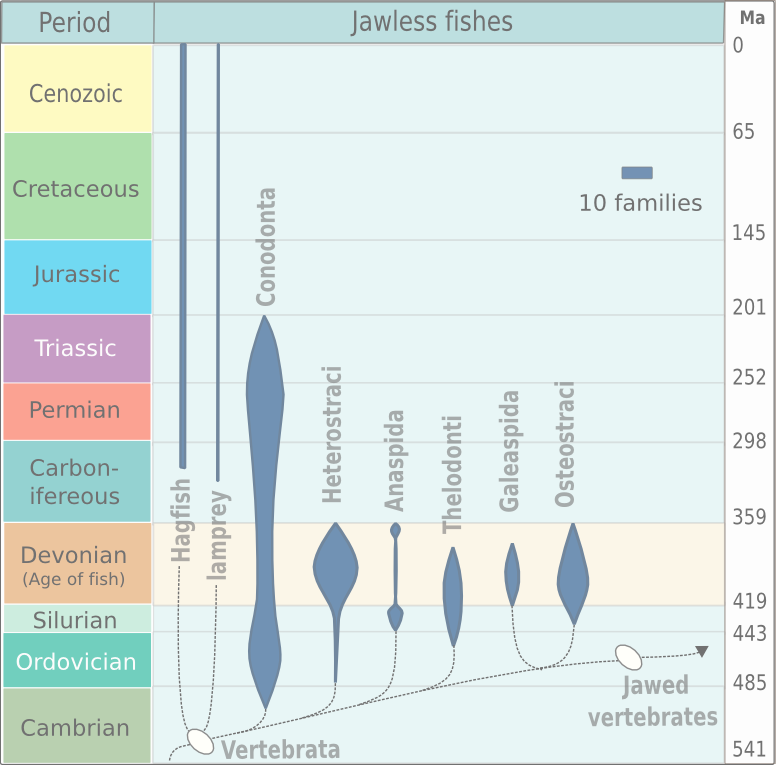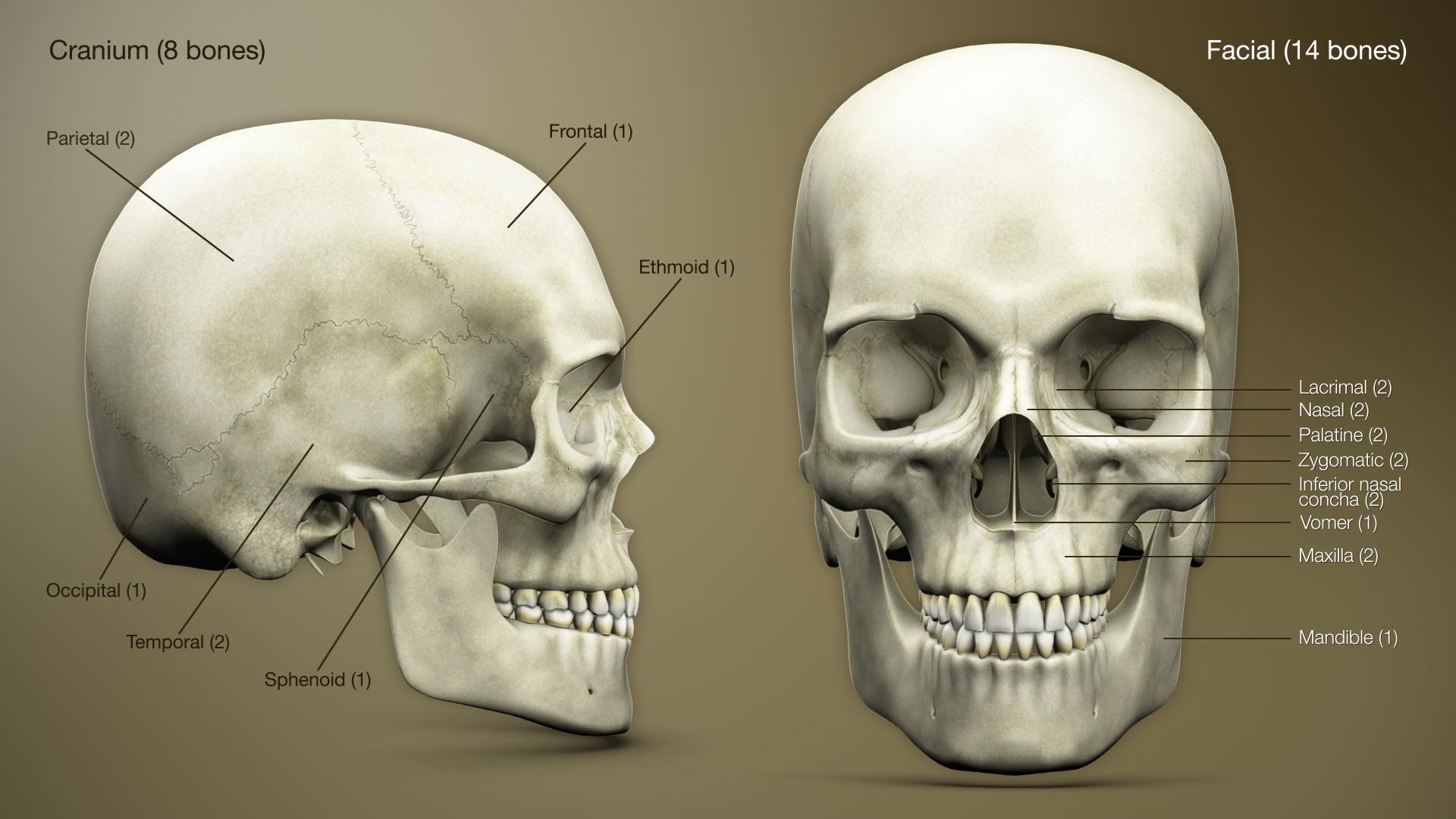|
Cephalaspidomorphi
Cephalaspidomorphs are a group of agnatha, jawless fishes named for ''Cephalaspis'' of the Osteostraci, osteostracans. Most biologists regard this taxon as extinct, but the name is sometimes used in the classification of lampreys, because lampreys were once thought to be related to cephalaspids. If lampreys are included, they would extend the known range of the group from the Silurian and Devonian periods to the present day. They are the closest relatives of jawed fishes, who emerged from within them and they would survive if the jawed fish are included. Biology and morphology Cephalaspidomorphi were, like most contemporary fishes, very well armoured. The head shield was particularly well developed, protecting the head, gills and the anterior section of the viscera. The body was in most forms well armoured as well. The head shield had a series of grooves over the whole surface, forming an extensive lateral line organ. The eyes were rather small and placed on the top of the head ... [...More Info...] [...Related Items...] OR: [Wikipedia] [Google] [Baidu] |
Agnatha
Agnatha (, Ancient Greek 'without jaws') is an infraphylum of jawless fish in the phylum Chordata, subphylum Vertebrata, consisting of both present ( cyclostomes) and extinct (conodonts and ostracoderms) species. Among recent animals, cyclostomes are sister to all vertebrates with jaws, known as gnathostomes. Recent molecular data, both from rRNA and from mtDNA as well as embryological data, strongly supports the hypothesis that living agnathans, the cyclostomes, are monophyletic. The oldest fossil agnathans appeared in the Cambrian, and two groups still survive today: the lampreys and the hagfish, comprising about 120 species in total. Hagfish are considered members of the subphylum Vertebrata, because they secondarily lost vertebrae; before this event was inferred from molecular and developmental data, the group Craniata was created by Linnaeus (and is still sometimes used as a strictly morphological descriptor) to reference hagfish plus vertebrates. While ... [...More Info...] [...Related Items...] OR: [Wikipedia] [Google] [Baidu] |
Chordata
A chordate () is an animal of the phylum Chordata (). All chordates possess, at some point during their larval or adult stages, five synapomorphies, or primary physical characteristics, that distinguish them from all the other taxa. These five synapomorphies include a notochord, dorsal hollow nerve cord, endostyle or thyroid, pharyngeal slits, and a post-anal tail. The name “chordate” comes from the first of these synapomorphies, the notochord, which plays a significant role in chordate structure and movement. Chordates are also bilaterally symmetric, have a coelom, possess a circulatory system, and exhibit metameric segmentation. In addition to the morphological characteristics used to define chordates, analysis of genome sequences has identified two conserved signature indels (CSIs) in their proteins: cyclophilin-like protein and mitochondrial inner membrane protease ATP23, which are exclusively shared by all vertebrates, tunicates and cephalochordates. These CSIs provi ... [...More Info...] [...Related Items...] OR: [Wikipedia] [Google] [Baidu] |
Lamprey
Lampreys (sometimes inaccurately called lamprey eels) are an ancient extant lineage of jawless fish of the order Petromyzontiformes , placed in the superclass Cyclostomata. The adult lamprey may be characterized by a toothed, funnel-like sucking mouth. The common name "lamprey" is probably derived from Latin , which may mean "stone licker" ( "to lick" + "stone"), though the etymology is uncertain. ''Lamprey'' is sometimes seen for the plural form. There are about 38 known extant species of lampreys and five known extinct species. Parasitic carnivorous species are the most well-known, and feed by boring into the flesh of other fish to suck their blood; but only 18 species of lampreys engage in this micropredatory lifestyle. Of the 18 carnivorous species, nine migrate from saltwater to freshwater to breed (some of them also have freshwater populations), and nine live exclusively in freshwater. All non-carnivorous forms are freshwater species. Adults of the non-carnivorous ... [...More Info...] [...Related Items...] OR: [Wikipedia] [Google] [Baidu] |
Vertebrata
Vertebrates () comprise all animal taxa within the subphylum Vertebrata () (chordates with backbones), including all mammals, birds, reptiles, amphibians, and fish. Vertebrates represent the overwhelming majority of the phylum Chordata, with currently about 69,963 species described. Vertebrates comprise such groups as the following: * jawless fish, which include hagfish and lampreys * jawed vertebrates, which include: ** cartilaginous fish ( sharks, rays, and ratfish) ** bony vertebrates, which include: *** ray-fins (the majority of living bony fish) *** lobe-fins, which include: **** coelacanths and lungfish **** tetrapods (limbed vertebrates) Extant vertebrates range in size from the frog species '' Paedophryne amauensis'', at as little as , to the blue whale, at up to . Vertebrates make up less than five percent of all described animal species; the rest are invertebrates, which lack vertebral columns. The vertebrates traditionally include the hagfish, ... [...More Info...] [...Related Items...] OR: [Wikipedia] [Google] [Baidu] |
Swim Bladder
The swim bladder, gas bladder, fish maw, or air bladder is an internal gas-filled organ that contributes to the ability of many bony fish (but not cartilaginous fish) to control their buoyancy, and thus to stay at their current water depth without having to expend energy in swimming. Also, the dorsal position of the swim bladder means the center of mass is below the center of volume, allowing it to act as a stabilizing agent. Additionally, the swim bladder functions as a resonating chamber, to produce or receive sound. The swim bladder is evolutionarily homologous to the lungs. Charles Darwin remarked upon this in ''On the Origin of Species''.Darwin, Charles (1859''Origin of Species''Page 190, reprinted 1872 by D. Appleton. Darwin reasoned that the lung in air-breathing vertebrates had derived from a more primitive swim bladder. In the embryonic stages, some species, such as redlip blenny, have lost the swim bladder again, mostly bottom dwellers like the weather fish ... [...More Info...] [...Related Items...] OR: [Wikipedia] [Google] [Baidu] |
Cartilaginous
Cartilage is a resilient and smooth type of connective tissue. In tetrapods, it covers and protects the ends of long bones at the joints as articular cartilage, and is a structural component of many body parts including the rib cage, the neck and the bronchial tubes, and the intervertebral discs. In other taxa, such as chondrichthyans, but also in cyclostomes, it may constitute a much greater proportion of the skeleton. It is not as hard and rigid as bone, but it is much stiffer and much less flexible than muscle. The matrix of cartilage is made up of glycosaminoglycans, proteoglycans, collagen fibers and, sometimes, elastin. Because of its rigidity, cartilage often serves the purpose of holding tubes open in the body. Examples include the rings of the trachea, such as the cricoid cartilage and carina. Cartilage is composed of specialized cells called chondrocytes that produce a large amount of collagenous extracellular matrix, abundant ground substance that is rich in pr ... [...More Info...] [...Related Items...] OR: [Wikipedia] [Google] [Baidu] |
Axial Skeleton
The axial skeleton is the part of the skeleton that consists of the bones of the head and trunk of a vertebrate. In the human skeleton, it consists of 80 bones and is composed of six parts; the skull (22 bones), also the ossicles of the middle ear, the hyoid bone, the rib cage, sternum and the vertebral column. The axial skeleton together with the appendicular skeleton form the complete skeleton. Another definition of axial skeleton is the bones including the vertebrae, sacrum, coccyx, skull, ribs, and sternum. Structure Flat bones house the brain and other vital organs. This article mainly deals with the axial skeletons of humans; however, it is important to understand the evolutionary lineage of the axial skeleton. The human axial skeleton consists of 81 different bones. It is the medial core of the body and connects the pelvis to the body, where the appendix skeleton attaches. As the skeleton grows older the bones get weaker with the exception of the skull. The skul ... [...More Info...] [...Related Items...] OR: [Wikipedia] [Google] [Baidu] |
Notochord
In anatomy, the notochord is a flexible rod which is similar in structure to the stiffer cartilage. If a species has a notochord at any stage of its life cycle (along with 4 other features), it is, by definition, a chordate. The notochord consists of inner, vacuolated cells covered by fibrous and elastic sheaths, lies along the anteroposterior axis (''front to back''), is usually closer to the dorsal than the ventral surface of the embryo, and is composed of cells derived from the mesoderm. The most commonly cited functions of the notochord are: as a midline tissue that provides directional signals to surrounding tissue during development, as a skeletal (structural) element, and as a vertebral precursor. In lancelets the notochord persists throughout life as the main structural support of the body. In tunicates the notochord is present only in the larval stage, being completely absent in the adult animal. In these invertebrate chordates, the notochord is not vacuolated ... [...More Info...] [...Related Items...] OR: [Wikipedia] [Google] [Baidu] |
Pectoral Fin
Fins are distinctive anatomical features composed of bony spines or rays protruding from the body of a fish. They are covered with skin and joined together either in a webbed fashion, as seen in most bony fish, or similar to a flipper, as seen in sharks. Apart from the tail or caudal fin, fish fins have no direct connection with the spine and are supported only by muscles. Their principal function is to help the fish swim. Fins located in different places on the fish serve different purposes such as moving forward, turning, keeping an upright position or stopping. Most fish use fins when swimming, flying fish use pectoral fins for gliding, and frogfish use them for crawling. Fins can also be used for other purposes; male sharks and mosquitofish use a modified fin to deliver sperm, thresher sharks use their caudal fin to stun prey, reef stonefish have spines in their dorsal fins that inject venom, anglerfish use the first spine of their dorsal fin like a fishing rod ... [...More Info...] [...Related Items...] OR: [Wikipedia] [Google] [Baidu] |
Holocene
The Holocene ( ) is the current geological epoch. It began approximately 11,650 cal years Before Present (), after the Last Glacial Period, which concluded with the Holocene glacial retreat. The Holocene and the preceding Pleistocene together form the Quaternary period. The Holocene has been identified with the current warm period, known as MIS 1. It is considered by some to be an interglacial period within the Pleistocene Epoch, called the Flandrian interglacial.Oxford University Press – Why Geography Matters: More Than Ever (book) – "Holocene Humanity" section https://books.google.com/books?id=7P0_sWIcBNsC The Holocene corresponds with the rapid proliferation, growth and impacts of the human species worldwide, including all of its written history, technological revolutions, development of major civilizations, and overall significant transition towards urban living in the present. The human impact on modern-era Earth and its ecosystems may be considered of global ... [...More Info...] [...Related Items...] OR: [Wikipedia] [Google] [Baidu] |
Loricariidae
The Loricariidae is the largest family of catfish (order Siluriformes), with 92 genera and just over 680 species. Loricariids originate from freshwater habitats of Costa Rica, Panama, and tropical and subtropical South America. These fish are noted for the bony plates covering their bodies and their suckermouths. Several genera are sold as " plecos", notably the suckermouth catfish, '' Hypostomus plecostomus'', and are popular as aquarium fish. Common names Members of the family Loricariidae are commonly referred to as loricariids, suckermouth armoured catfishes, or armoured catfish. The name " plecostomus", and its shortened forms "pleco" and "plec", are used for many Loricariidae, since ''Plecostomus plecostomus'' (now called '' Hypostomus plecostomus'') was one of the first loricariid species imported for the fish-keeping hobby. Some loricariids are not normally considered "plecostomus", such as '' Farlowella'' catfish. In their native range, these fish are known as '' ... [...More Info...] [...Related Items...] OR: [Wikipedia] [Google] [Baidu] |








.png)

